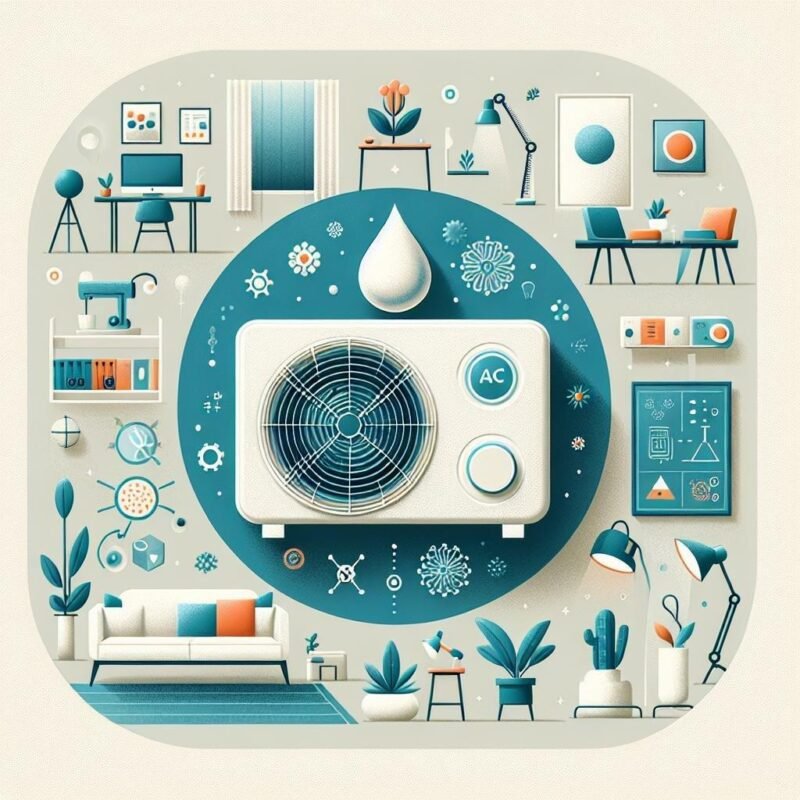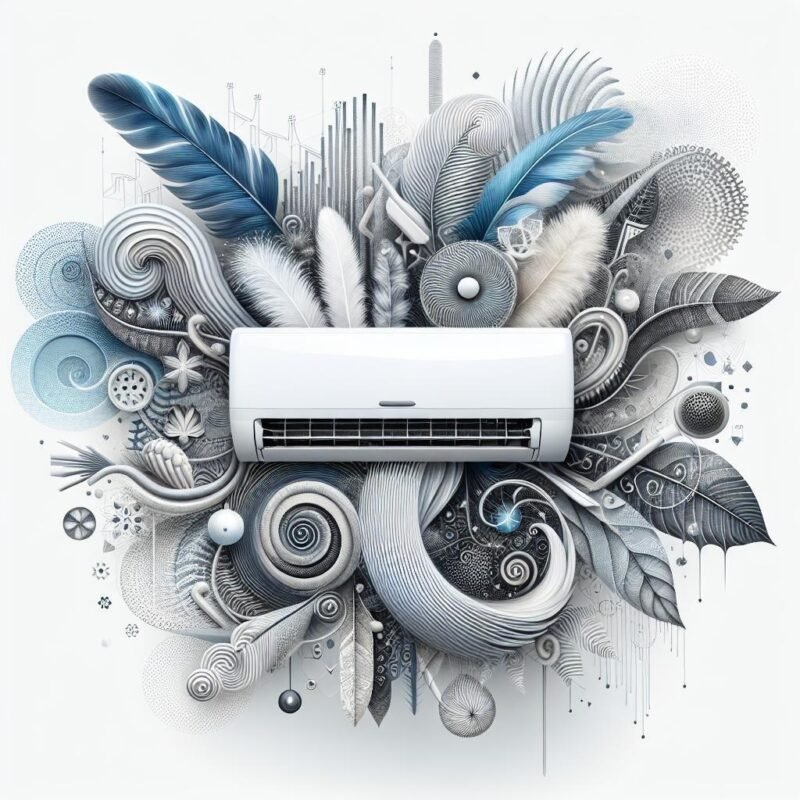The Importance of Proper Mini Split AC System Sizing for Energy Efficiency

Picture this: A sweltering summer day, your mini split AC humming quietly in the background, keeping you perfectly comfortable without breaking the bank. Sounds like a dream, right? Well, it’s not magic – it’s the power of proper sizing. Just like Goldilocks searching for that “just right” porridge, finding the perfect size for your mini split AC system can make all the difference between energy-wasting frustration and efficient, money-saving comfort. In today’s world, where every kilowatt counts and sustainability isn’t just a buzzword, understanding the art and science of AC sizing might just be your ticket to the perfect indoor climate.
Understanding Load Calculations: The Foundation of Mini Split Efficiency
When it comes to ductless systems, precise calculations are your best friend. Getting the math right means more than just crunching numbers – it’s about creating the perfect comfort zone in your space. A properly sized mini split doesn’t just cool or heat; it maintains the ideal balance of temperature and humidity while keeping your energy bills in check. Think of it as tailoring a suit – too loose or too tight, and you’ll never feel quite right.
The secret sauce lies in these key factors:
- Room dimensions – Every square foot counts
- Insulation quality - Your home’s cozy jacket
- Window placement – Nature’s heat gain zones
- Local climate – Mother Nature’s influence
- Heat-generating appliances – Your indoor heat contributors
| Space Type | BTU Guide | Coverage Area |
|---|---|---|
| Small Room | 9,000 BTU | 350-400 sq ft |
| Medium Room | 12,000 BTU | 450-550 sq ft |
| Large Room | 18,000 BTU | 700-1,000 sq ft |
Room by Room Analysis: Mapping Your Space for Perfect Climate Control
Getting the perfect climate control setup starts with understanding your home’s unique layout. Each room has its own personality when it comes to heating and cooling needs. Consider factors like ceiling height, window placement, and daily sunlight exposure – that sunny home office might need more cooling power than the shaded guest bedroom. Natural heat sources, such as large windows or kitchen appliances, play a crucial role in determining the necessary BTU capacity for specific areas.
Take a methodical approach by creating a detailed floor plan and marking potential indoor unit locations. Don’t forget to consider your family’s living patterns – the rarely-used formal dining room won’t need the same cooling power as your busy living area. Here’s what to evaluate in each space:
- Room dimensions and volume
- Number and size of windows
- External wall exposure
- Typical occupancy levels
- Heat-generating equipment presence
| Room Type | Special Considerations |
|---|---|
| Kitchen | Appliance heat output |
| Bedroom | Night comfort priority |
| Home Office | Electronics heat load |
Beyond BTUs: Matching Capacity with Real World Performance
While manufacturer BTU ratings provide a baseline, real-world performance depends on numerous factors that impact your mini split’s actual cooling and heating capabilities. Climate variations, building insulation quality, and indoor heat-generating activities can dramatically affect system efficiency. A unit that’s perfectly sized on paper may struggle during peak summer days if these practical considerations aren’t factored into the equation. Consider these essential real-world variables:
- Daily sun exposure and window orientation
- Local humidity levels and seasonal changes
- Ceiling height and room layout
- Number of heat-producing appliances
- Typical occupancy patterns
Smart sizing requires looking beyond basic square footage calculations and delving into your home’s unique characteristics. Peak load analysis helps determine how your system will perform during the most demanding conditions, not just average days. A properly matched mini split should maintain comfort levels while running at 70-80% capacity most of the time, allowing headroom for those scorching afternoons or extra-cold mornings. This sweet spot ensures optimal energy efficiency without constant cycling or strain on the system.
| Usage Pattern | Recommended Capacity Buffer |
|---|---|
| Light (Evenings only) | 10-15% |
| Moderate (Day & Evening) | 15-20% |
| Heavy (All-day/Commercial) | 20-25% |
Smart Sizing Strategies: Balancing Comfort and Energy Consumption
Getting the perfect dimensions for your mini-split AC isn’t just about measuring square footage. Think of it like finding the ideal pair of shoes – too big, and you’ll waste energy with excessive cycling; too small, and you’ll struggle to maintain comfort on scorching days. A properly sized system considers factors beyond mere room dimensions, including ceiling height, window placement, and local climate patterns. By evaluating these elements, you can achieve the sweet spot where performance meets efficiency.
The key lies in a comprehensive approach to sizing calculations. Consider these essential factors:
- Heat-generating appliances and their daily usage patterns
- Natural sunlight exposure throughout different seasons
- Home’s insulation quality and air-sealing efficiency
- Number of occupants and their comfort preferences
| Room Size (sq ft) | Recommended BTU | Daily Usage (hrs) |
|---|---|---|
| 150-250 | 6,000 | 4-6 |
| 250-400 | 9,000 | 6-8 |
| 400-650 | 12,000 | 8-10 |
Q&A
Q: Why is sizing my mini split AC system properly so important?
A: Great question! Imagine wearing a pair of shoes that’s too small or too big; it’s uncomfortable, right? Similarly, an improperly sized mini split AC can lead to inefficiency and discomfort. A system that’s too small won’t cool your space effectively, leading to overwork and increased energy bills. On the other hand, an oversized unit will cycle on and off too quickly, failing to dehumidify the air properly and wasting energy. It’s all about finding that perfect fit for your space!
Q: What are the consequences of an oversized or undersized system?
A: Think of it as a Goldilocks scenario – one’s too hot, the other’s too cold! An oversized system cools too quickly, leading to cold drafts and sticky humidity. Conversely, an undersized system struggles, running constantly and ultimately burning out. You’ll not only be left sweating, but you’ll also notice an uptick in your electricity bills. Who wants that?
Q: How do I know what size mini split AC I need?
A: A little bit of math and know-how goes a long way! You’ll want to measure your room’s square footage and consider factors like ceiling height, insulation, window sizes, and where the sun shines. Many HVAC professionals use the BTU (British Thermal Unit) method to find the ideal cooling capacity. Don’t worry; you don’t have to calculate it alone! Consulting with a specialist can offer peace of mind and tailored advice.
Q: Are there any other benefits of getting the right size mini split system?
A: Absolutely! Besides comfort and efficiency, a properly sized mini split system can prolong the life of your unit and reduce repair costs. It also contributes to a lower carbon footprint, making Mother Nature happy. Plus, you’ll enjoy enhanced indoor air quality and less noise! What’s not to love?
Q: Is it wise to try to install a mini split AC myself if I think I know the right size?
A: While the DIY spirit is admirable, installing a mini split AC system is one of those tasks better left to the pros. Sizing is just one part of the equation; proper installation is crucial for maximizing efficiency. A professional will ensure everything is set up correctly, which saves you time, money, and potential headaches down the road.
Q: Can I change the size of my mini split system later on?
A: While you can’t simply ‘resize’ your existing unit, you can upgrade or replace it. If your home’s requirements change (like a new addition or energy-efficient windows), re-evaluating and potentially swapping out for the right size is a wise move. A little homework or consultation with an HVAC professional will help you make informed decisions.
Q: What should I take away regarding mini split AC sizing?
A: The key takeaway is that sizing matters every bit as much as the type of unit! Proper sizing ensures your comfort, boosts energy efficiency, and can save you money in the long run. So, consider it a friendly reminder – investing a bit of time and effort into choosing the right mini split AC system is well worth every chilled moment!
Key Takeaways
when it comes to mini split AC systems, size truly matters—not just in terms of comfort, but also in energy efficiency and cost savings. Imagine walking into a perfectly chilled room after a long day, where every corner feels just right, all while knowing you’re being kind to your wallet and the planet. By investing time in proper sizing and seeking the help of seasoned professionals, you ensure that your mini split system works not just harder, but smarter.
As you embark on this journey towards a breezy and energy-efficient home, remember that every decision counts. So why not take that extra step? Your future self—and the environment—will thank you! Here’s to creating a cozy and efficient sanctuary, one perfectly-sized unit at a time. Stay cool, my friends, and let those refreshing breezes flow!






















